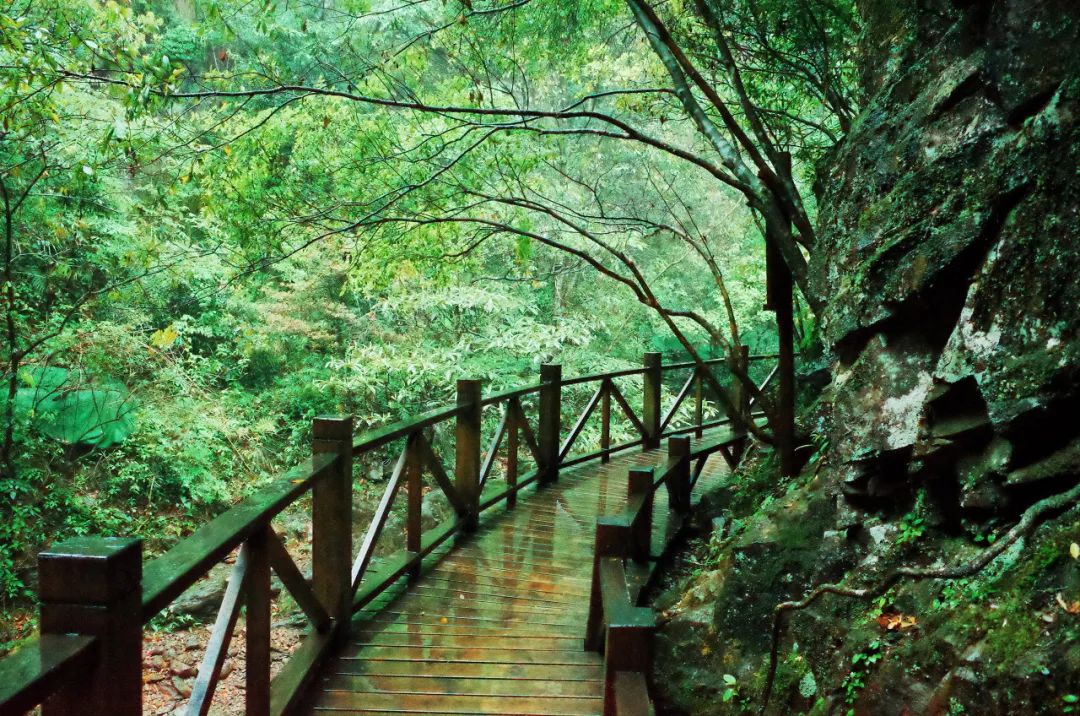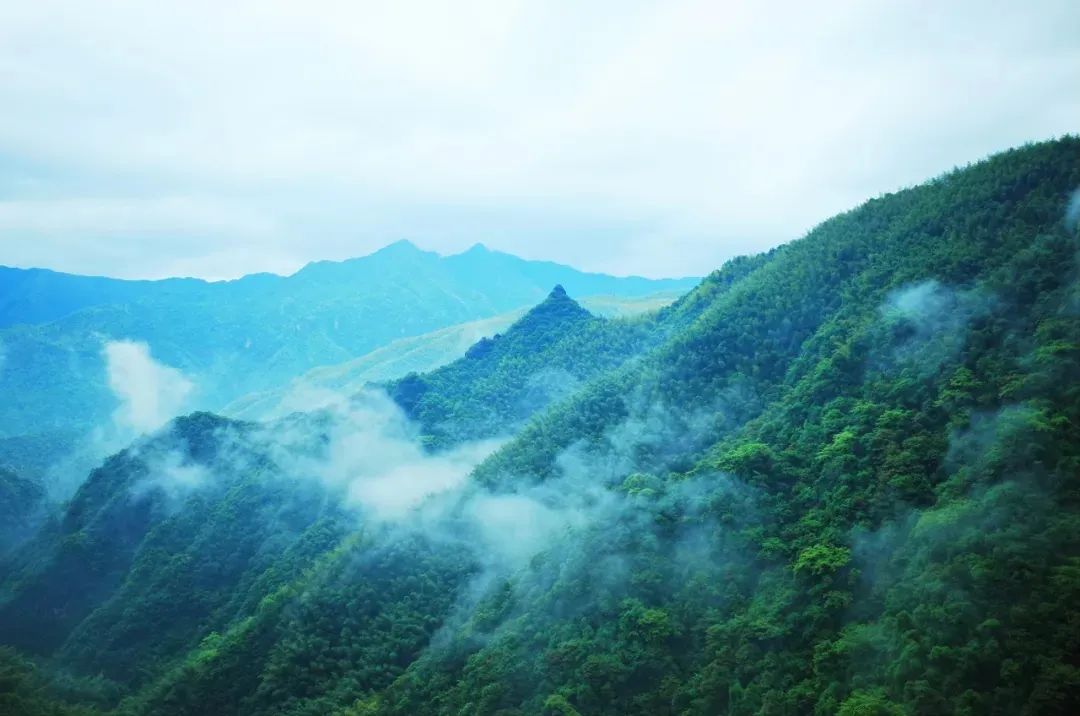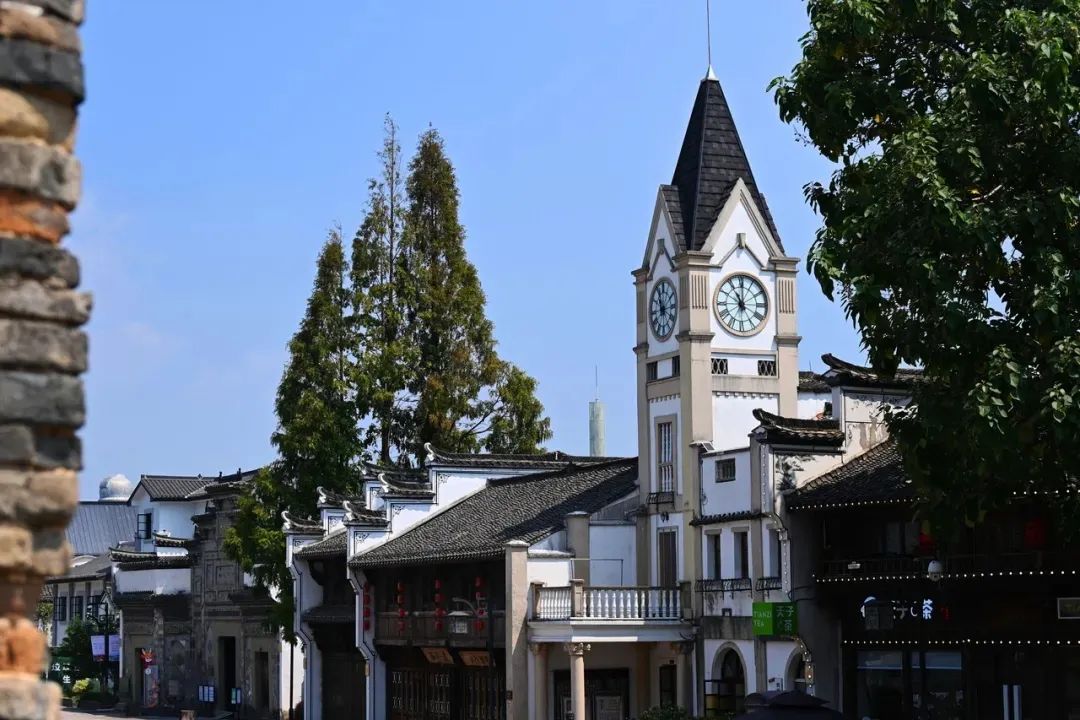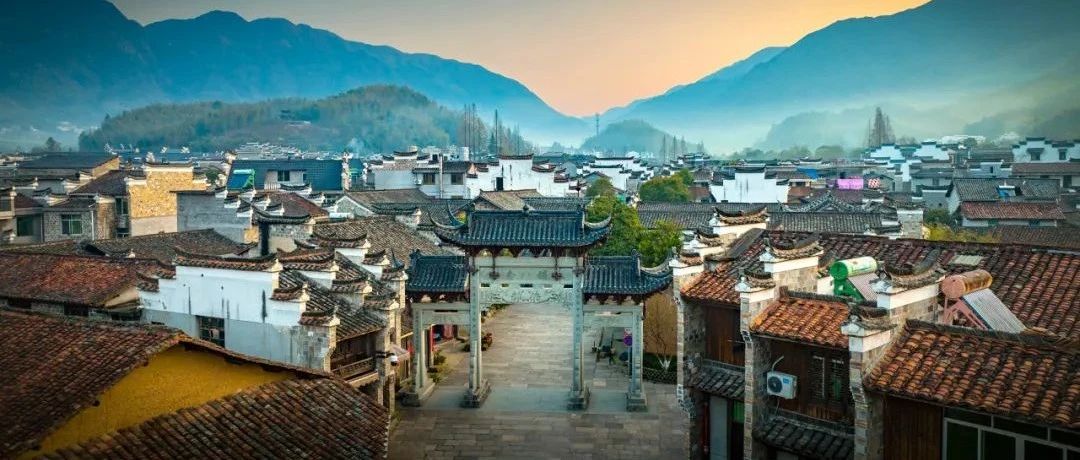In Zhejiang, this ancient and fertile land, the ancient towns are like stars, Wuzhen, Xitang, Nanxun… each one is dazzling and exudes its own unique light.
However, among the shining stars, there is one hidden in the mountains and deep valleys, like an independent pearl. It is the Nianbadu Ancient Town, an almost unknown treasure.
Nianbadu Ancient Town is located in the mountainous area at the junction of the three provinces of Zhejiang, Fujian and Jiangxi. It is surrounded by mountains, rivers and green mountains, as if it were a landscape painting carefully carved by nature.
It was once a battleground for military strategists in history. It experienced the baptism of war and later became a settlement place for immigrants, carrying a rich history and culture.
After more than 900 years of vicissitudes, Nianbadu Ancient Town still retains a large number of ancient buildings from the Ming and Qing Dynasties, as if time has frozen here, giving people a glimpse of the style of that distant era.
This ancient immigrant town is a unique “dialect kingdom” where nine dialects and more than a hundred surnames coexist, showing a unique cultural charm.
So, why is this beautiful ancient town called “Twenty-eight Capitals”?
It turns out that in the Song Dynasty, there were 44 capitals at the rural and lower levels, and 44 capitals were set up in the country, and the 28th capital was one of them.
This name has been used to this day and has become the unique identity of the ancient town.
In Jiangshan City, place names such as Sidu, Badu, and Twenty-sevendu are still preserved, which seem to tell the long history and culture of this land.
Due to its remote location, Nianbadu Ancient Town has a completely different style from the Jiangnan Water Town. It is less noisy and bustling, but more peaceful and mysterious.
The buildings here are large in scale, unique in style, ancient and elegant, showing the charm of the ancient town.
The colors are elegant and simple, the wood carvings are exquisite, the plane layout is ingenious, and the temple paintings are vivid, making every place unforgettable.
The murals in the ancient town are even more breathtaking. They are like unique landscapes, displayed in front of the world.
The rich color paintings have distinctive features. All the beams, rafters, purlins and caissons are painted with figures, flowers, landscapes, birds and animals… It feels like you are in a natural mural museum, which is breathtakingly beautiful.
The famous writer Wang Zhecheng once praised:
“I don’t know of any other place in the ancient town in the south of the Yangtze River where there are such well-preserved ancient buildings from the Ming and Qing dynasties in clusters like Nianbadu. The whole street and the whole alley are like this.”
In 2017, Nianbadu Ancient Town was promoted to a national 5A tourist attraction, becoming the pride of Zhejiang Province.
Different from other famous scenic spots, after becoming a 5A scenic spot, Nianbadu only charges tourists tickets on weekends and holidays, and is still open for free on weekdays.
This unique charging method demonstrates the ancient town’s persistence and persistence in inheriting national culture.
The founder of Nianbadu Ancient Town’s love and persistence for national culture allowed this ancient town to be preserved authentically to this day.
With their efforts, the ancient town has become a place without commercial atmosphere, like a dream lost in the mountains.
At dusk, the setting sun reflects on the stream, and the rolling mountains and Rosary Bridge form a beautiful contrast.
The sun is slanting across the mountainside, birds are chirping in the mountains and forests, there are only a few pedestrians on the bridge, and the stream is gurgling under the bridge, which gives it a sense of tranquility.
In front of the eaves and corridors of the ancient town, young women sewed clothes or packed shoe soles, while children played around their knees or helped pass scissors or thread needles.
The crystal clear Maple River flows through the town, making people feel childlike and unable to resist rolling up their pants and stepping into the stream. This place can really make people forget time, as if they have returned to the purest era in an instant.
Nianbadu Ancient Town is a treasure hidden in the mountains, waiting for everyone who is willing to explore it to discover its beauty.
Here, you can feel the tranquility and purity, and find the lost memories and emotions.
Quzhou, Quzhou
In fact, not only is the ancient town of Nianbadu often forgotten by people, Quzhou, where it is located, is also often obscured by the dust of time.
Whenever Quzhou is mentioned, people will first think of the famous Quzhou Duck Head.
This duck head, because of its unique spicy taste, actually makes many people mistakenly believe that Quzhou is in Sichuan or Hunan. The spiciness of this duck head is evident.
However, Quzhou is actually located in the land of Zhejiang. It may be the only city in Zhejiang that is “not spicy but not fun”.
The spicy here is different from the spicy in Sichuan and Hunan, but a unique and deep spicy. It has been integrated into the daily life of Quzhou people and has become an indispensable part of the city.
Fireworks and poetry at the same time
Quzhou, this ancient city, is like a moving historical picture, with every step bearing the traces of time.
Walking through the streets and alleys of the city, ancient city walls and simple buildings come into view. Every stone slab and every house seems to tell the long history and culture of Quzhou.
Every ray of sunshine and every breeze seems to carry the agarwood of time, making people intoxicated.
The mountains and rivers here are even more breathtakingly beautiful.
The Qujiang River is like a blue ribbon, crossing the city and bringing vitality.
And Jianglang Mountain is a major scenic spot in Quzhou.
It combines rocks, caves, clouds and waterfalls in one mountain, which is strangely steep and spectacular.
Whenever the clouds and mist are lingering, it feels like you are in a fairyland, making people forget to leave.
In addition to the natural scenery, Quzhou’s cultural landscape is also breathtaking.
Longyou Grottoes, an underground complex full of mysteries, makes people marvel at the wisdom and creativity of the ancients.
The Root Palace Buddhist Cultural Tourism Area perfectly combines root carving art with Chinese culture, allowing people to appreciate the art while also feeling the profound cultural heritage.
Yaowang Mountain is named after Sun Simiao, the “King of Medicine”, who lived here in seclusion for a long time.

Walking into Yaowang Mountain, I really felt like I was in a place where gods live.
The mountains are filled with thousands of beautiful mountains, hundreds of rivers, green bamboos and trees, birds singing and the fragrance of flowers. The rich natural resources are breathtaking.

“If you don’t know Shuitingmen, you are a person from Quzhou in vain.”
Shuitingmen Historical and Cultural Block is the block with the most concentrated traditional style buildings and the richest historical and cultural relics in Quzhou City. It is like a book, quietly embedding the past storms and clouds between the lines.

In addition, Quzhou’s delicious food is not to be missed. The duck heads, rice dumplings and other specialty snacks here are endlessly memorable with every bite.
Quzhou is really seriously underestimated.
Quzhou, an underrated treasure city.
Here, you can feel the richness of history, appreciate the beauty of nature, appreciate the charm of culture, and taste the temptation of delicious food.
Whether you’re looking for peace of mind or thrilling adventure, Quzhou has what you need.
Therefore, you might as well come to Quzhou to experience the unique charm of this city and look for the beauty that has been forgotten by time.
I believe you will be deeply attracted by the landscape, culture, and food here and never want to leave.































